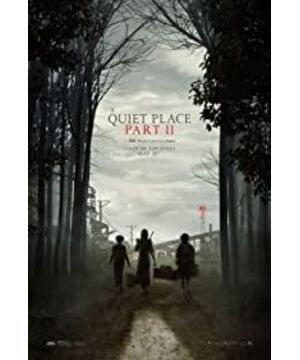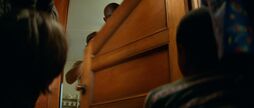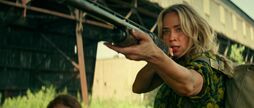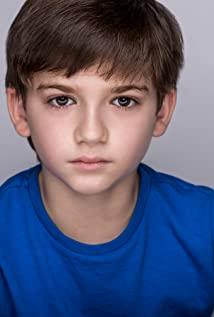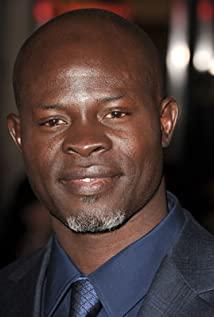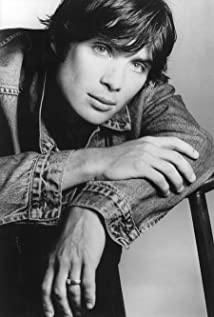[This article was first published on the public account: Duanmu Xu]
Commemorating the first time I saw a horror movie in theaters.
The three-act drama structure can be traced back to the drama theory summarized by Aristotle in "Poetics", that is, drama should contain three parts: beginning, middle and end .
The famous screenwriter Syd Field expanded and visualized this theory. His conceptual model was placed in the movie script and can be divided into the following three acts:
The first act is the lay -out , which makes up a quarter of the film. The purpose is to construct a basic framework for the narrative of the entire film, to explain the main background and events of the story, and to introduce the main character relationships;
The second act, the conflict , makes up half of the film. This stage promotes the development of the plot through the evolution of conflict, while gradually increasing the tension of the protagonist against obstacles;
The third act is the settlement , which makes up a quarter of the film. Mainly to dramatize the conflict climax and finally give a formal conclusion.
The above model does not apply to the analysis of realist or formalistic films, but it is basically consistent with the dramas since 1910 that promote the development of the plot with emotion and conflict . Widespread, making the three-act structure the most common mode of play, especially in Hollywood .
The high-concept horror film "A Quiet Place" launched by Paramount Pictures in 2018 has grossed nearly $300 million at the global box office at a cost of $17 million, so the sequel "A Quiet Place 2" was released naturally. Released this year.
Despite the impact of the epidemic, the sequel has already received nearly 200 million US dollars at the box office, and the third part is just around the corner.
The reason for the film's success is naturally inseparable from its high concept of "can't make a sound ", but it is still the above-mentioned classic three-act playwriting technique that supports this concept to advance the development of the plot.
1. The laying out of the story
The plot part of the film is 88 minutes long, and the first act is about 19 minutes long.
It is necessary to give a general introduction to the plot of the first part.
There are five members of Evelyn's family in total, including Li, the Evelyn couple, their eldest daughter Regan, their son Marcus, and their youngest son Beau. Reagan is deaf and mute, so the whole family can sign language , which also allows them to Facilitates communication when monsters come.
After the monster came, every night there was a tacit understanding between the neighbors, and they would light a bonfire on the roof to prove that they were still alive.
The Evelyn family also survived. When they went to the supermarket to pick up daily necessities, their youngest son Bo took a toy that made a sound and was killed by a monster.
Later, Evelyn became pregnant and stepped on a nail when she went to the basement and accidentally knocked over the photo frame in her hand, which attracted the monster. The Evelyn family fought against the monster. Lee chose to sacrifice in order to save Regan and Marcus. Evelyn also successfully gave birth to a child, and in the end Regan found that the monster reacted greatly to the high-frequency sound of the hearing aid she was wearing, which could expose the most vulnerable head wrapped in a hard shell. The monster is killed, and the first part ends.
Unlike the first one, which directly showed life in the post-monster period, this one first introduced the origin of the monster .
The monster comes from outer space. When people flee, they find that it has no vision , but its hearing is keen . Any disturbance will arouse its alertness, and it will kill those who make the sound with cruel and fast actions.
This scene also explained the relationship between the main characters, the life of five members of Evelyn's family, and also introduced a new character , Aimott , who is their neighbor and friend.
After that, the plot jumped to the end of the first part. Evelyn cleaned up the mess and walked towards a campfire with Regan and Marcus and the newborn child, and the first act ended.
The development of conflict
The second act runs from the 19th minute to the 68th minute of the film.
This scene mainly revolves around the mode of conflict creation-conflict development-conflict resolution to promote the development of the plot, and constantly circulate this mode to control the rhythm of the film, so that the audience is always in a state of tension, thereby stimulating the audience's desire to continue watching, this scene There are five prominent points of conflict in the
The first conflict was that Evelyn's family entered an abandoned building with a bonfire, but they made a noise because they didn't know who arranged the mechanism, and Marcus also shouted because he stepped on the boar clip. At this time, the screen appeared. A shot of the Evelyn family with a sniper rifle.
In this way, two small conflicts were created . One was that Marcus' shouting would attract monsters, and the other was who was setting up the mechanism and holding the sniper rifle? But because they mastered the monster's weakness, the Evelyn family used the frequency of the hearing aid and shotgun to kill the monsters that came, but they attracted more monsters. Fortunately, they were rescued by a mysterious man and came to the basement. A relatively sealed space. At this time, the two conflicts were resolved at the same time, and the Evelyn family was saved, and the mysterious person who set up the organization was their friend Aimott.
The second conflict occurred that night. Marcus accidentally heard a radio station playing a song. Regan thought it was someone sending a signal, but Amott believed that there was no safe place in the outside world. The two sides had differences and conflicts. highlight.
Regan, who was more adventurous at night, talked to Marcus about his plan to go to the location of the radio station, but he didn't get support, so he chose to go alone, and the conflict intensified. Finally, at Evelyn's request, Amott went out to find Regan, and the conflict was resolved.
This conflict does not have strong visual effects and atmosphere creation, mainly to promote the plot smoothly, and to make the film change from a single-line narrative to a dual-line narrative . Since then, Emot and Regan have been on the same road, and the others have continued to stay in Elmo. Special hiding place, waiting for Ai Mot to come back, and then the two sides of the plot develop at the same time, two-line narrative, cross-editing, and increase the viewability of the film .
Look at the line Evelyn and Marcus first.
After Amott went out to look for Regan, Evelyn was also going to go to the town pharmacy to pick up a few cans of oxygen cylinders to supply the newborn baby with oxygen (because the newborn baby is easy to be noisy, so Evelyn put the baby in a In a wooden box, oxygen is supplied through an oxygen cylinder to allow the child to breathe).
The third conflict occurred after Evelyn went out. Seeing that his mother didn't come back, Marcus went out of the basement and "explored" in the abandoned building, but when he saw Emot's wife, who had become a mummy, he was so frightened that he knocked over the objects around him and created a A lot of noise will inevitably attract monsters and conflicts will appear ;
So Marcus hurried back to the basement and took the child into the completely airtight shelter, but locked the door completely. The door can only be opened from the outside, and the oxygen inside is only enough to breathe for a few minutes, and the conflict intensified ;
At this time, the mother rushed back, made an explosion to make the sprinkler work, confused the monster's hearing, and came to the basement, opened the locked door and rescued Marcus and the child, and the conflict was resolved .
Look at Amott and Regan again.
The fourth conflict is when Regan saw an abandoned train on the road and wanted to take the first aid kit on the car, but unexpectedly attracted a monster, and the conflict appeared;
Then use high frequency to expose the fragile head of the monster, but Regan's first shot did not kill the monster, and the shotgun jammed, and the conflict intensified;
Seeing that the monster was about to approach, Ai Mot arrived in time, killed the monster with a headshot, and the conflict was resolved.
The fifth conflict is where Ai Mot agreed to go to the radio station with Regan, and met a group of surviving people in a harbor, but in order to snatch their belongings, they tied a fishing net full of bottles to Ai Mo. On the special body, as long as he moves, it will make a sound, which will attract monsters and conflict;
This group of people not only took away the bag that Regan was carrying, but also took away the hearing aids that could fight monsters, and the conflict intensified;
Then, at Amott's suggestion, Regan jumped into the river to escape. Amott also made a noise to attract the monster. At the moment when the monster attacked, he jumped into the river and untied the fishing net. Finally, the two got on the boat and went there. Where to play the radio station, conflict resolution.
The second act also ends with Amott and Regan's long-distance ship.
3. The end of the plot
The third act runs from the 68th minute of the film to the end of the feature film at the 88th minute.
In this scene, the plot will be pushed to the climax , and the contradictions in the film will be reasonably resolved .
Ai Mot and Regan finally arrived on the island where the radio station is located. Surprisingly, the island is really inhabited by humans. They found that the monsters can't swim and can't go from the other side to the island, so here is the Very safe.
But when Amote was walking on the island the next day, he found a boat carrying a monster also parked on the shore of the island.
At this point, the film reached its climax. The unsuspecting people were suddenly attacked by the monsters who came to the island by boat, while Evelyn was attacked by the monsters when she was going out to get medicine. Both sides created a conflict at the same time. , and the director maximizes this conflict by cross-cutting , making the audience hold their breath for the situation on both sides.
In the end, Regan placed the hearing aid on the microphone of the radio station, so that the high-frequency sound could be transmitted to prevent the monsters from killing all over the island. At the same time, Marcus also heard the high-frequency sound from the radio through the radio, and put the radio outside Release, so both sides suppressed the monster's movements with high-frequency sounds at the same time, Regan and Marcus also walked towards the monster at the same time, and used weapons to kill the monster at the same time.
The third act ends and so does the film.
Of course, this scene is not a typical curtain call. Generally speaking, at the end of the normal third act, there will be a buffer time for the audience after the climax of the plot . For example, after killing monsters on both sides, they finally reunite, or they pack their bags and prepare for the next one. Cheng Yunyun, instead of stopping abruptly like the film , will make the audience unhappy.
However, this is also excusable, and it can pave the way for the next part. Perhaps the first act of the next part is to explain the background of the reunion between the two sides.
All in all, the film is quite satisfactory, and many audiences have already accepted the setting that cannot make a sound in the first part, so the silent setting in this one will greatly reduce the appeal of the audience.
Perhaps the director also knows this well, so he has done a lot of work in other aspects of the film. Compared with the first film, this film uses multiple locations to enrich the space, uses two-line narration to enrich the plot, and uses cross-cutting to control the rhythm.
In terms of script creation, it is a classic and standard three-act structure.
View more about A Quiet Place Part II reviews


